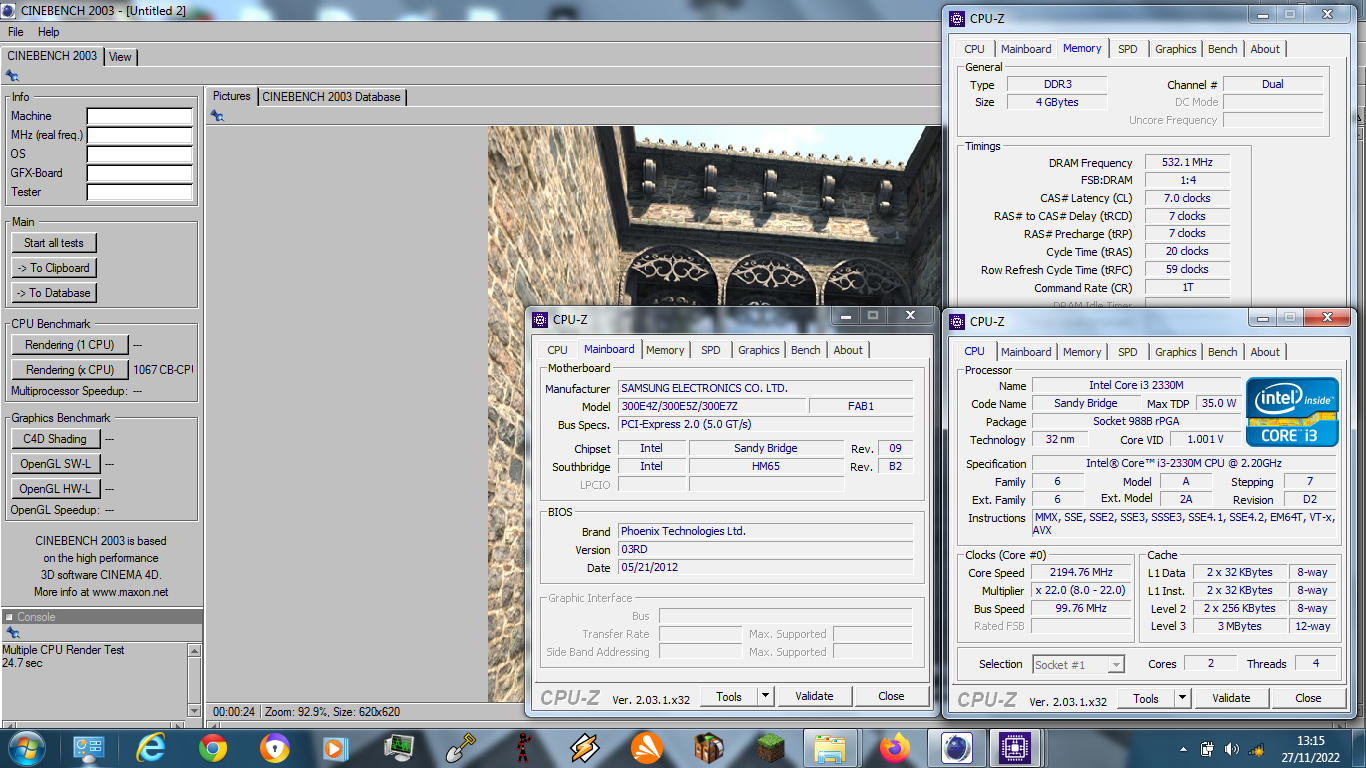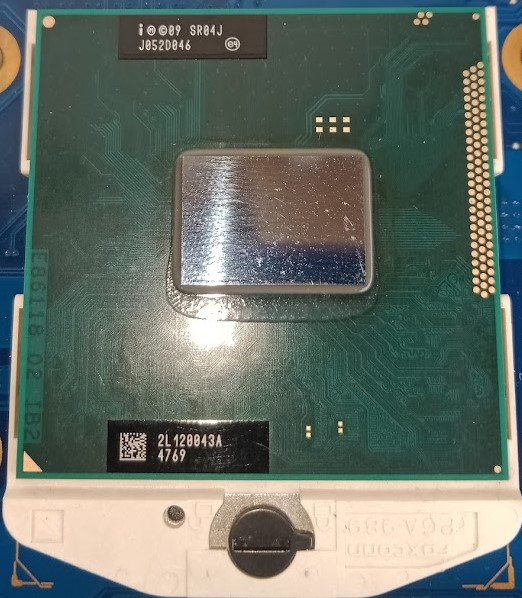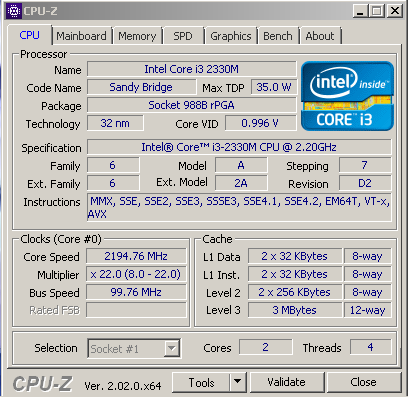Cinebench - 2003 score 1067 cb with a i3-2330M
Thursday, 01 January 1970 07:00 | Update at null
Media Gallery
Screenshot

Device, Setup, etc



URL
https://hwbot.org/submission/5130929-
Information Detail
Hardware: Intel Core i3 2330M
Specs:CPUID : Intel(R) Core(TM) i3-2330M CPU @ 2.20GHz
Architecture : x86
Codename : Sandy Bridge
L3 Cache : 3MB
Clock : 2.20GHz
Core/Thread : 2/4
TDP : 35W
Technology : 32nm
Socket : PPGA988
IGPU : Intel HD Graphics 3000 Mobile
See more specification...
Software: Cinebench - 2003
Score: 1067 cb
About: Cinebench - 2003Cinebench 2003 is one of the early versions of the Cinebench suite of benchmark tools based on CINEMA 4D Release 8 software, a professional 3D application from MAXON. Although it's relatively old, Cinebench 2003 is still used by some tech enthusiasts and overclockers as a historical performance reference and comparison of processor architectures over time. The application is available for free and is compatible with both Windows and Mac OS operating systems.
This benchmark tests system performance through several rendering and graphics processing scenarios. The main test in Cinebench 2003 involves rendering 3D scenes using the CPU, which can measure the efficiency and computing power of up to 16 processor cores in a single system. The results are measured in the form of a score-the higher the score, the faster the processor completes the render job. This is very useful for evaluating the multi-core capabilities of CPUs, especially on early generation processors that are starting to support multiple cores.
In addition to CPU testing, Cinebench 2003 also includes an OpenGL-based graphics test, where thousands of animated polygons are rendered in real-time to assess the GPU's ability to handle complex graphical displays. This test is important for users who want to understand how their system handles viewport-based graphics workloads, such as those often found in 3D design and modeling software.
Although it has been replaced by more modern Cinebench versions such as R15, R20, and R23, Cinebench 2003 still has historical and technical value. Many benchmark data collectors and retro hardware enthusiasts use this version to consistently test and compare the performance of older systems. With a long track record of use and transparent testing methods, Cinebench 2003 is still relevant as a reference tool to see the evolution of CPU and GPU performance over time.
The Intel Core i3-2330M is a dual-core mobile processor launched in 2011 as part of Intel’s second-generation Sandy Bridge lineup. Designed for mid-range laptops, this processor features 2 cores and 4 threads thanks to Intel Hyper-Threading Technology, allowing it to handle light to moderate multitasking workloads efficiently. Operating at a fixed clock speed of 2.2 GHz and built on the 32nm process, the i3-2330M does not include Intel Turbo Boost, which limits its ability to dynamically increase performance under heavier loads, but it remains a solid choice for everyday use.
With a TDP of 35W, the i3-2330M balances power consumption and performance reasonably well for its era. It integrates Intel HD Graphics 3000, a GPU with a base clock of 650 MHz and a dynamic frequency up to 1.1 GHz. While not designed for modern gaming or demanding graphic applications, this integrated GPU handles HD video playback, basic 3D rendering, and older or lightweight games at low settings with relative ease. Users looking for casual computing and multimedia playback will find it sufficient.
In real-world usage, the Core i3-2330M performs well for standard computing tasks such as web browsing, streaming, office productivity (e.g., Word, Excel), and simple photo editing. Its Hyper-Threading capabilities give it a performance edge over older dual-core processors that lack thread duplication. However, the lack of Turbo Boost and a relatively low base frequency mean that it can struggle under CPU-intensive workloads like video rendering or large spreadsheet processing, especially when compared to more modern CPUs.
This specific configuration was tested on a SAMSUNG 300E4Z, a laptop originally shipped with an Intel Celeron B815 processor but later upgraded to the i3-2330M for better performance. With 4GB of DDR3 dual-channel memory and Windows 7 installed, the system runs smoothly for basic daily use, making the i3-2330M a practical upgrade option for budget-conscious users seeking improved performance without replacing their entire system.
Hardware Detail:
Device: SAMSUNG 300E4Z (This device originally used Celeron B815 which was upgraded to i3 2330M.)
RAM: 4GB DDR3 Dual Channel
OS: Windows 7
* Not Avaiable
